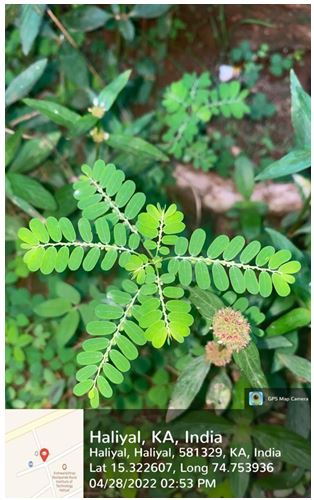KLS, VISHWANATHRAO DESHPANDE INSTITUTE OF TECHNOLOGY, HALIYAL

Therapeutic Uses of Bhumi Amla:
- For jaundice, whole plant juice is advised. Fresh milk combined with powdered roots can also be taken for quick treatment of jaundice.
- The leaves can be mashed with salt and used as a topical treatment for skin ailments.
- For diabetes and chest pain, plant decoction proves quite beneficial.
- Ulcers are treated with a decoction of leaves or roots.
- Wounds and ulcers are treated using a mixture of the plant’s dried powder and gruel water.
- For treating leucorrhoea, gonorrhoea, menorrhoea, and other urinary problems, whole plant juice is used.
This plant’s extract can effectively treat hepatitis and may also treat human immunodeficiency virus (HIV)/acquired immunodeficiency syndrome (AIDS).
It is used as an ingredient in nearly 175 ayurvedic formulations, and the fruits of this plant are usually used to treat haemorrhages and diarrhoea.
It’s also used to make chavanprash, face lotion, hair oil dye, and tooth powder, among other health and beauty products.2
Benefits of Bhumi Amla:
Benefits of Bhumi Amla Against HIV & Hepatitis B:
- Phyllanthus niruri may stop the hepatitis B virus (HBV) from multiplying by preventing the virus’s genetic material from being replicated.
- An aqueous extract of P. niruri can block HBV’s endogenous DNA polymerase by attaching to the virus’s surface antigen.
- By attaching to the virus’s surface antigen, the extract was discovered to block woodchuck (Marmotamonax) hepatitis virus (WHV) DNA polymerase.
- Surface antigen titer and DNA polymerase activity in serum were significantly decreased and abolished by the extract.
Bhumi Amla For Kidney Stones & Excess Uric Acid:
- The creation, nucleation, development, and aggregation of calcium oxalate crystals in the kidney is a prevalent condition that causes urinary calculi (stone) formation.
- The extract of Phyllanthus niruri inhibits the growth and aggregation of calcium oxalate [CaOx] crystals in calculi.
- The extract inhibits calculi formation while also altering their shape and texture.
- It can produce a matrix-like material on the surface of prepared calculi, and it can change the appearance and texture of the calculus.
- The extract is also given to hypercalcemic patients, as it lowers urine calcium levels and lowers excess uric acid in hyperuricemic individuals.
Anti-cancer Activity of Bhumi Amla:
- Phyllanthus niruri has a strong potential for inhibiting cancer cell development and growth.
- However, because it prolongs cancer formation in the skin and reduces its multiplicity and yield, Phyllanthus niruri intensifies two-stage skin carcinogenesis.
- The combination of P. niruri’s cytoprotective impact on normal cells and cytotoxic effect on pre-neoplastic or neoplastic cells resulted in this action.
- In addition, potent phytochemicals, such as quercetin and rutin were responsible for a significant reduction in the prevalence of skin papillomas.
Wound-healing & Anti-ulcer Properties of Bhumi Amla:
- According to a rat study, the development of indomethacin-induced ulcers was significantly slowed when ethanolic preparations of the herb were given orally.
- Gallic acid, beta-sitosterol, ellagic acid, and the alkaloids-4-methoxy-securinine have been linked to its anti-ulcer action.
- P. niruri extracts also prevent ethanol-induced stomach mucosal ulceration in rats and reverse dexamethasone-suppressed burn wound healing. To date, no precise mechanisms have been stated
KLS, VISHWANATHRAO DESHPANDE INSTITUTE OF TECHNOLOGY, HALIYAL is proudly powered by WordPress